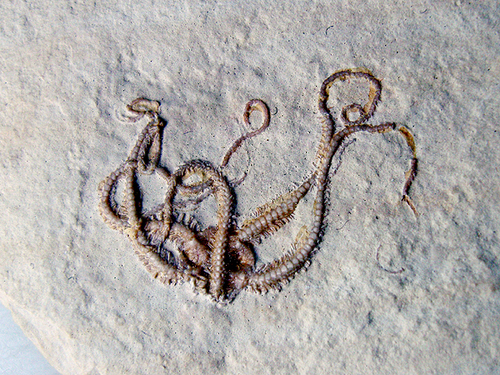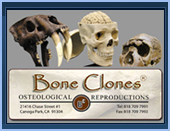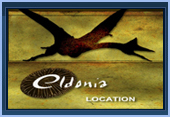일반명 : 거미불가사리화석(Brittlestar)
학명 : Sinosura kelheimense
지질시대 : 쥬라기(Jurassic 154 - 144 million years ago)
지층 : Solnhofen Lithographic Limestone
원산지 : Zandt, Southern Germany
Fossils from the Solnhofen Limestone
- A Jurassic Jewel Solnhofen Lithographic Limestone,
Probably the most famous Lagerstatt in the world is that of the Solnhofen limestone deposits in the state of
The first Archaeopteryx fossil was discovered in 1860, a single feather. The following year a very complete example was found, which was ultimately sold to the
The discovery of the wonderful fossils of Solnhofen may be attributed to the longtime uses to which the "plattenkalk" has been used. This is a German word that seems more appropriate than the English "platy limestone". Plattenkalk was used as early as the Stone Age for making drawings and colored murals due to its softness. The flat, regularly shaped material was suitable for paving roads and building walls, something done by the ancient Romans who for a time held sway over the region. In the Middle Ages, the stone was used as floor and roofing material.
The mosaic floor of the
The fossils have always been prized by local residents because of their beauty. As those most intimately associated with the limestone, the quarrymen were obviously those who were responsible for their discovery. At first, quarry owners allowed the workers to keep the fossils they found, but as interest in them (and consequently, value) grew, this practice stopped. The variety and number of fossils known is deceptive. The occurrence of fossils is quite low. Indeed, a worker can quarry for an entire day and find not a single one. The hundreds of years of quarrying are what make them seem so apparently common.
The sheets of limestone are so regular that we can only conclude that they were laid down in a calm environment. The deposits were evidently laid down under a stable body of water that had some connection to the
These isolated lagoons would have been quite stagnant due to little exchange of water with the sea. Anoxic conditions would have been ideal for preventing destruction of organisms that found their way into the lagoons. Some evidently survived for short periods. One of the most famous examples of this are the horseshoe crab "death spirals' that exist in which a spiral trackway has been preserved with the defunct arthropod in the center, presumably preserving its last efforts at survival.
The theory most often proposed for the toxicity of the waters has been that of hypersalinity, the excessive concentration of salt. If the area were hot and dry, with little runoff from the land to the north, conditions would have been ideal for promoting excessive evaporation of water with concomitant increase in the salinity in the lagoons. The dense brine would collect in the bottom of the pools, excluding most life, as sensitivity to even minute changes in density has been seen in many marine organisms. Once an organism had been washed into the lagoon by the action of a storm, it would quickly succumb to the toxic conditions that existed within. The hypersaline, anoxic floor was ideal for the preservation of the body, often even leaving evidence of soft tissues.
Storms would have often brought in a suspension of finely-dispersed lime. Such storms would have brought in the amazing diversity of life we know from the region: pterosaurs, dinosaurs like Compsognathus and Archaeopteryx, dragonflies, and other insects, fish, turtles, crinoids, starfish, jellyfish, ammonites, worms, plants, and many, many more. The number of species found exceeds 500. The limestone deposits of Solnhofen open a door closed to us over 150 million years ago, affording us a look at a wonderful diversity of life from both the land and the sea of the Jurassic.












































 수량을 선택해주세요.
수량을 선택해주세요.





































